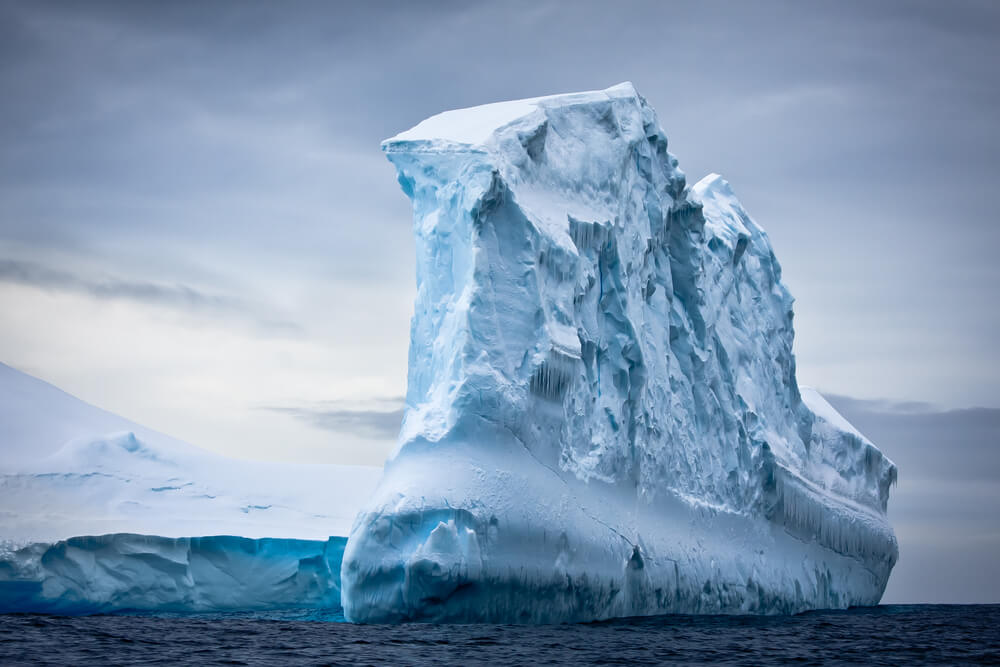The effects of global warming: a historic temperature record set in Antarctica
The largest iceberg in the world breaking away from a glacier in Western Antarctica is due to set sail in the near future, reports Air force.

Photo: Depositphoto
The temperature in northern Antarctica on the continent, best known for its snow, ice and penguins, reached a record high of 65 degrees Fahrenheit (18,3 degrees Celsius). The previous record of 63,5 degrees (17,5 degrees Celsius) was set in March 2015. Temperature readings were taken on Thursday, February 6, at an Argentinean research base and still need verification by the World Meteorological Organization.
Randall Cherveni, who analyzes temperature indicators, said: "Everything indicates that these indicators are correct." He also added that he expects complete data for confirmation.
On the subject: Business to save the planet: how to make money to fight global warming
The Esperanza research base is located on a peninsula that is adjacent to the extreme south of South America. According to the World Meteorological Organization, this peninsula has warmed up significantly over the past half century - almost 5,4 degrees Fahrenheit (+3 Celsius).
Cherveni said the unusually high temperature was probably caused by the rapid warming of the air coming down the mountainside.
Global warming heats the polar regions of the Earth - Antarctica and the Arctic, faster than other regions of the planet.
According to an annual report published in December by the National Oceanic and Atmospheric Administration, the Arctic is heating more than twice as fast as the rest of the globe. For Antarctica, there is no such annual report.
The colossal iceberg, which received the designation A68, broke off the ice shelf in July 2017. During the first year, he almost did not drift, as he was aground.
Now it is moving in a northeast direction and has almost reached the edge of permanent sea ice in the ocean.
When it broke away from the glacier, the iceberg had an area of almost 6000 square kilometers. Over the past two and a half years, it has slightly decreased in volume.
However, scientists are confident that when the iceberg enters the ocean-free expanses of ice, it will begin to rapidly collapse.
“The length to thickness of the iceberg is like a stack of five sheets of A4 paper, so I'm amazed that ocean waves haven't yet reduced Iceberg A68 to a mass of broken ice,” says Professor Adrian Luckman from Swansea University in the UK.
“If it survives beyond the edge of permanent sea ice, I will be very surprised,” he added.
Now the sea currents and the wind are causing the iceberg to drift along the eastern coast of the Antarctic Peninsula, and during the current summer season, the drift speed has increased dramatically.
Iceberg A68 is located in the southern latitude - 63 degrees. Scientists can confidently predict the trajectory of its further movement.
After rounding the northern edge of the peninsula, the giant iceberg will move north and enter the relatively warm waters of the south Atlantic. Scientists call this direction “alley of icebergs.”
Many of the largest Antarctic icebergs reach a southern latitude of 54 degrees, that is, they reach the island of South Georgia.
The largest iceberg ever seen in our time was the B15, which broke away from the Ross ice shelf in 2000 and had an area of 11000 square kilometers.
One of its fragments, now has an area of only 200 square kilometers, is located halfway to the South Sandwich Islands, located east of the island of South Georgia.
Such large ice facilities are under constant surveillance due to a threat to shipping. They are monitored by special satellites and regularly photographed.
Scientists are not losing sight of two other large icebergs, which should soon break away from the ice sheet in the Antarctic.
One of them is about to break away from the Pine Island Glacier in West Antarctica. Its area will be only slightly more than 300 square meters. km This mass of ice already has many cracks.
On the subject: For 70 years, the oceans warmed up to an explosion temperature of 3 billion atomic bombs
“I expect the new iceberg to break into several fragments immediately after detaching from the glacier,” says Professor Luckman.
Another large iceberg forms in East Antarctica, on the edge of Brant’s ice shelf. Its area is likely to be about 1500 square meters. km, which is approximately equal to the area of Greater London.
This future iceberg has already attracted much attention, because it had to move the British Halley research station to a new place.
It will break off after a large crack reaches a section of ice that is less than 10 km in length. When exactly this will happen, no one knows.
“The crack is growing and expanding, but at a slow pace, and the area of the future fracture is almost not moving,” notes Professor Lachman.
Read also on ForumDaily:
How accurate were climate change predictions made 20 years ago
Impossible to stop: irreversible climate change began on Earth
Subscribe to ForumDaily on Google NewsDo you want more important and interesting news about life in the USA and immigration to America? — support us donate! Also subscribe to our page Facebook. Select the “Priority in display” option and read us first. Also, don't forget to subscribe to our РєР ° РЅР ° Р »РІ Telegram and Instagram- there is a lot of interesting things there. And join thousands of readers ForumDaily New York — there you will find a lot of interesting and positive information about life in the metropolis.











